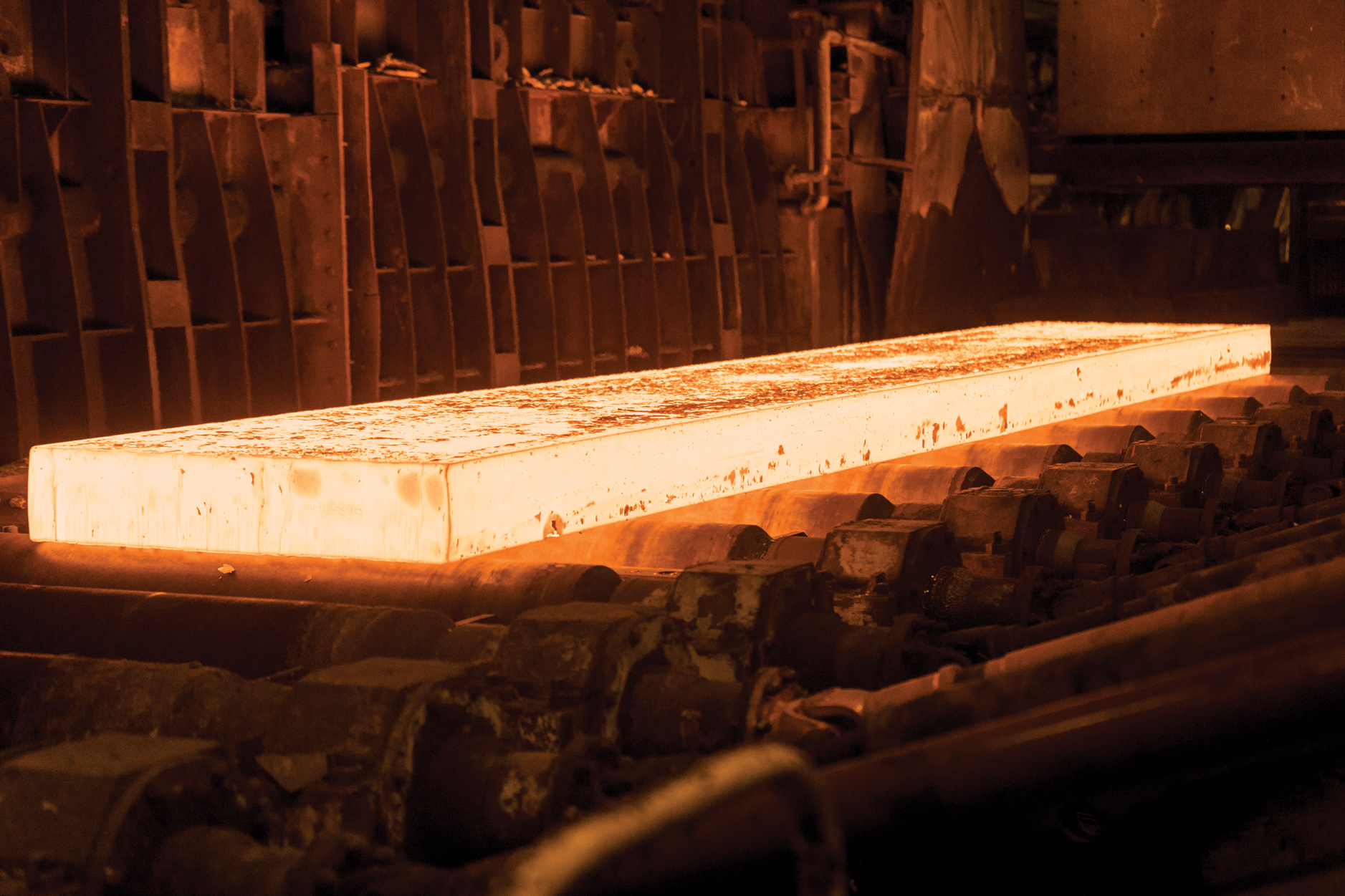|
Getting your Trinity Audio player ready...
|

New Zealand Steel’s site at Glenbrook sprawls over about 140 hectares on the banks of the Waiuku River, surrounded by its own 400ha of farmland.
At certain times of the day and night, motorists (and my enthusiastic kids) can spot a jet of orange flame shooting from the oxygen steelmaking furnace (KOBM).
New Zealand Steel mines up to 1.2 million tonnes of black sand from the nearby Waikato North Head, processing the ironsand at the on-site concentration plant. Magnetic concentrate is extracted via a series of separation processes, then mixed with water to create a slurry before it’s pumped 18km to the Glenbrook mill.
Stepping inside the hot rolling plant, red hot slabs start 210mm thick before passing through a mill five or seven times until about 25mm thick. It’s then coiled up like a glowing orange roll-up to retain heat until it’s sent through the finishing mill, where it can be as thin as 2mm.
Even from the viewing area, you can feel the heat radiating off the glowing steel, and the hiss of cool water hitting hot metal resonates around the building.
Waiuku man Mark Watt looks after tours and inductions for the plant and is my guide as the Franklin Times visits the site.
“I started in 1987 as an 18-year-old working in production, first working in the hollow section, later in the coatings and paint line. I was the production team leader on the paint line until about five years ago.”
There have been a lot of changes over the 36 years Mark has worked at the steel mill. The hollow section was decommissioned in 2020; there are many new technologies, and it now employs a more diverse workforce.
“We were a very male-dominated industry. In some areas of production, we are getting close to 30 per cent of female staff on the floor.”
The Glenbrook mill is largely self-sufficient, Mark said, with a strong sense of community and its own health centre, firefighters, and cafe on site.
“When it comes to careers here, you name it, we have it. Everything from nurses and doctors, accountants, legal, chefs, baristas, cleaners, a range of production roles too.”
When the Franklin Times embarked on a brief tour, work was well underway on the new electric arc furnace (EAF), with most of the civil work completed.
New Zealand Steel produces around 650,000 tonnes of steel a year, most of which is consumed domestically to support the country’s infrastructure needs and provide a local reliable supply of high-quality steel products to the building, construction, industrial, energy and agricultural sectors.
“To do that, we currently need around 800,000 tonnes of coal a year – this will halve once the electric arc furnace is up and running,” New Zealand Steel external affairs manager Vicki Woodley said.
The project is on target to be cold commissioned in December this year, with hot commissioning planned for March 2026.
“The future is looking very good. Through the EAF we have not only secured but also positioned well to grow the domestic steel-making industry. New Zealand Steel has earned its place as a strategic asset for the country.”
To mark 60 years of operation, commemorative flags line both sides of the road in the Waiuku Town Centre, also proudly flying at the Glenbrook site.
“Quite rightly, our focus for marking this incredible milestone is on our people and our community. There are a number of initiatives underway to support this, including a new 60-year emblem, commemorative gift for every employee, and a series of videos to communicate our journey.”
Vicki said Waiuku College students also took part in an art competition to design a cultural sleeve for the mill’s PPE shirts.





